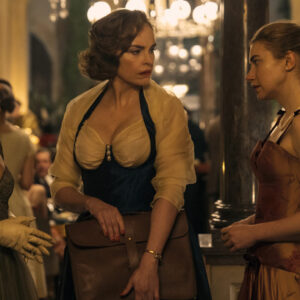The following is from Notes for an Epilogue, by Tamas Dezso (text by Eszter Szablyar). Out now from Hatje Cantz.
“In this country, we had to walk, eat, sleep and love in fear.”
–Herta Müller
The most severe dictatorship of Eastern Europe ended with a spectacular execution at Christmas, 1989. The hurried yet theatrical scene was broadcast live by the world’s news media—the ruthless death of the uneducated shoemaker’s apprentice-cum-dictator, Nicolae Ceausescu, along with his wife Elena, who shared his cult of personality, was of symbolic importance. The elimination of the communist regime, developed from 1946 to the 1989 revolution—which pursued a friendly policy towards the West, yet later became isolated following the enforced repayment of western loans—left only promises of democracy in a country which was completely exhausted, both intellectually and economically.
 Huts (near Moisei), 2011
Huts (near Moisei), 2011
The revolution set the systematically impoverished society serious tasks, while an opportunity to interpret the past opened simultaneously with reconstruction. The burdensome legacy of the past decades waiting to be analysed has included the image of areas covered with reinforced concrete factories as a result of aggressive industrialization, the memory of the central determination to eliminate villages and transform the village experience, with its traditions and agricultural way of life, into an existence in housing estates and slums characterised by empty shops, and the traumas of rationing embodied in endless queues and starvation. The political changes put an end to the period of intellectual terror as well as the infinitely prolonged physical misery.
 Copșa Mică Factory (Copșa Mică), 2013
Copșa Mică Factory (Copșa Mică), 2013
 The Flooded Village of Geamăna (Geamăna), 2012
The Flooded Village of Geamăna (Geamăna), 2012
They involved a decision to halt the persecution of minorities and religious communities, to rein in the secret police, which, reflecting the paranoid system, kept an eye on everything, to close down political prisons operated as centers of ideological re-education, and to do away with the prohibition of abortion. However, the euphoria of change has been replaced by the silence of disappointment and the feeling of being let down. Romania joined the EU in 2007, yet today unemployment represents a serious problem, as does migration and the resulting complete depopulation of villages, as well as industrial regions turning into crumbling ghost zones.
The traditions of several centuries and the remains of the communist dictatorship’s decades are disappearing in parallel. This double passing is rendered by our photographic essay and text based on interviews and descriptions made on location. During our joint work of five years we have constantly experienced the compelling force of the final moments. The factory buildings we encountered a few months ago no longer exist, Ceausescu’s princely bed and Elena’s dressing table have already disappeared from the former diplomat’s mansion in southern Romania. The elderly shepherds and village residents, with whom we still have the chance to talk, are the last representatives of an animal-tending way of life that is close to nature, while at the same time they are witnesses to the history of the former dictatorship, which is sharply delineated even from far away. Coal tubs of closed mines still remain standing, some gigantic frescos promoting the greatness of communism on public buildings can still be seen, and a few faded red stars still appear on dilapidated factory walls.
 Curtain (House of Culture, Petroșani), 2014
Curtain (House of Culture, Petroșani), 2014
 Carpet Sellers (Pojorâta), 2012
Carpet Sellers (Pojorâta), 2012
Our work on this project is based on our own past experience—as children we both, via family ties, regularly crossed over to the neighbouring dictatorship of Romania from Hungary’s softening communist world. The winding queues in front of empty food shops and the everyday fear represent a part of our personal memories. The project is based on works of sociology, history and literature, materials of ethnographic museums and political science research centers, as well as our own research conducted in locations across Romania.
 Choir (near Abrud), 2012
Choir (near Abrud), 2012
 Ileana (Fața Roșie, Bătrâna), 2014
Ileana (Fața Roșie, Bătrâna), 2014
 Dump (near Aiud), 2012
Dump (near Aiud), 2012
 Forest with Mistletoe (near Oradea), 2014
Forest with Mistletoe (near Oradea), 2014
Notes for an Epilogue by Tamas Dezos
February 4-April 30, 2016
Robert Koch Gallery, San Francisco.
Lit Hub Photography
Photography excerpts are curated by Catherine Talese and Rachel Cobb.














